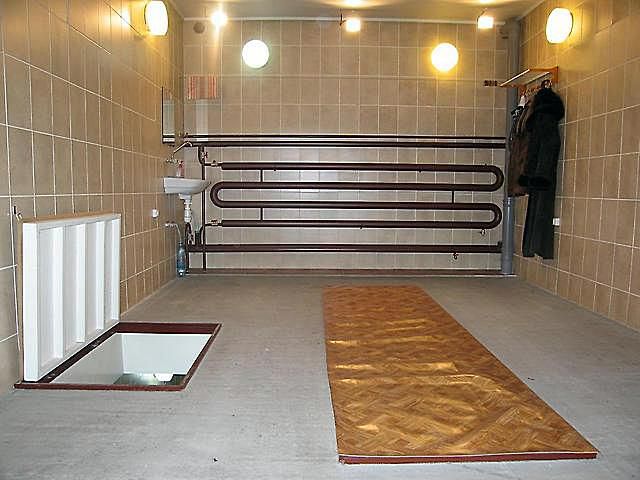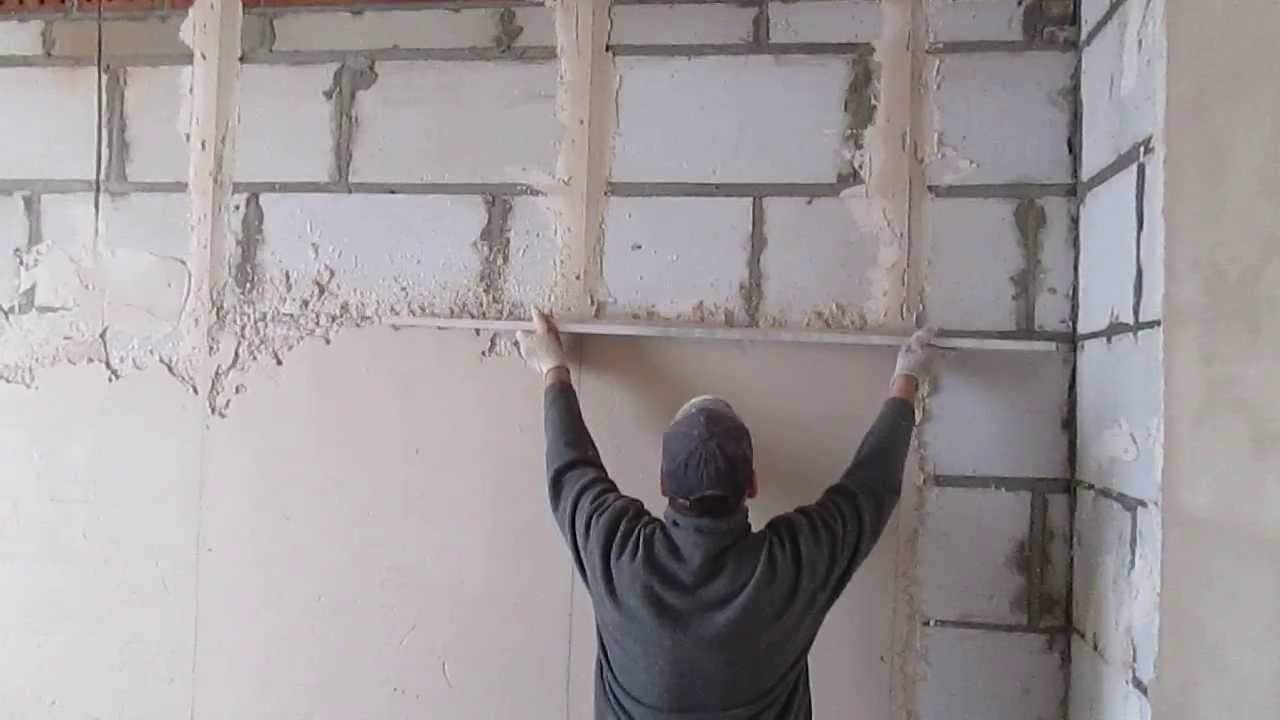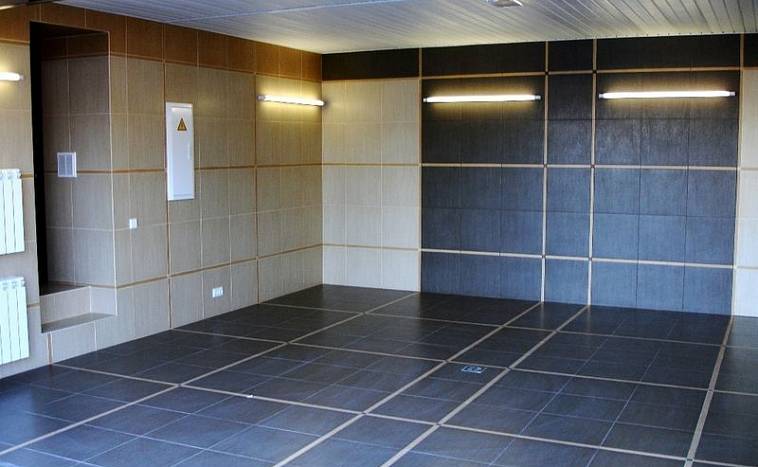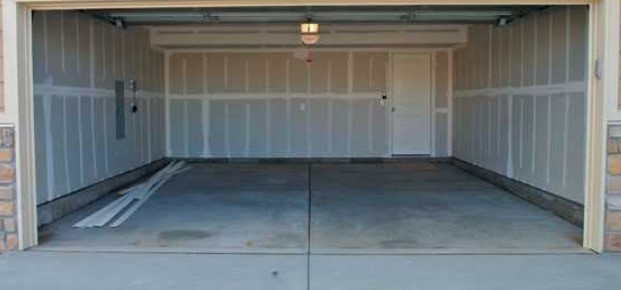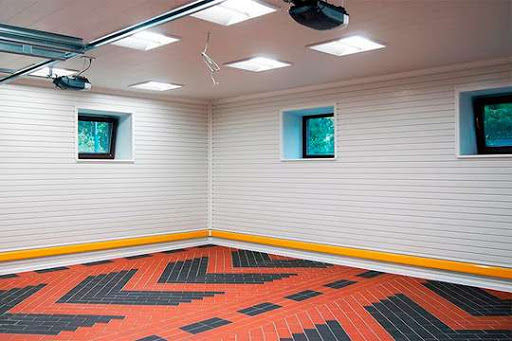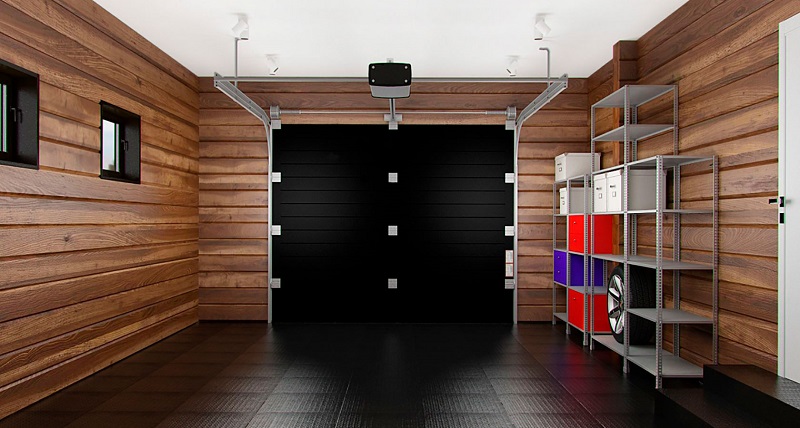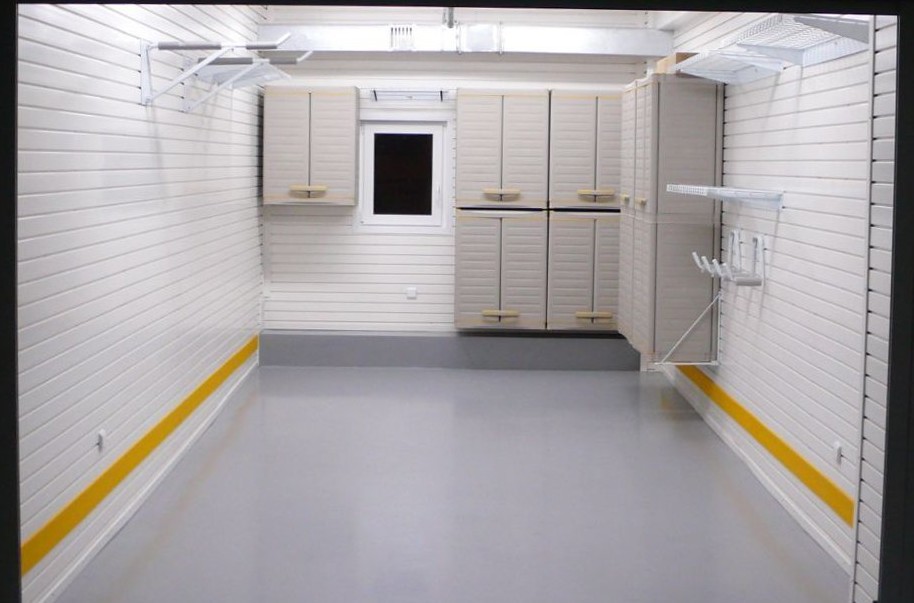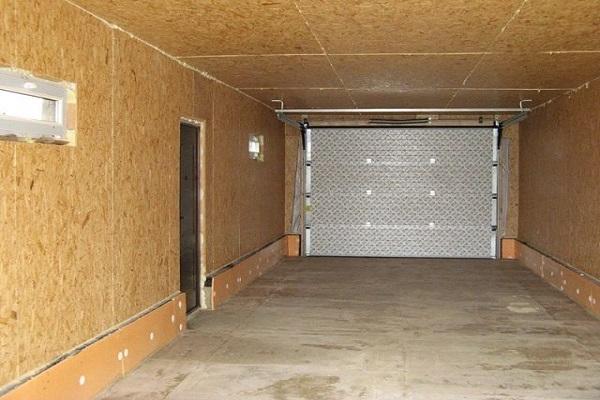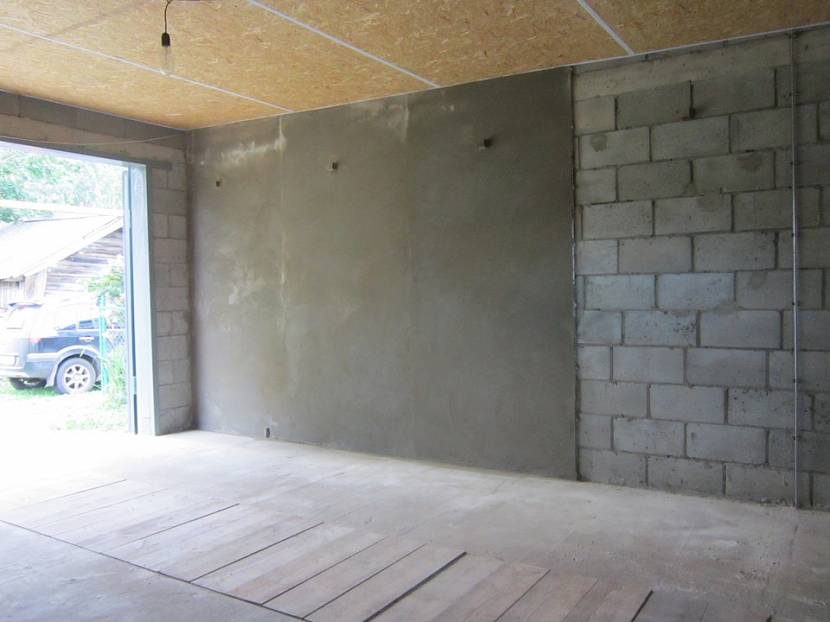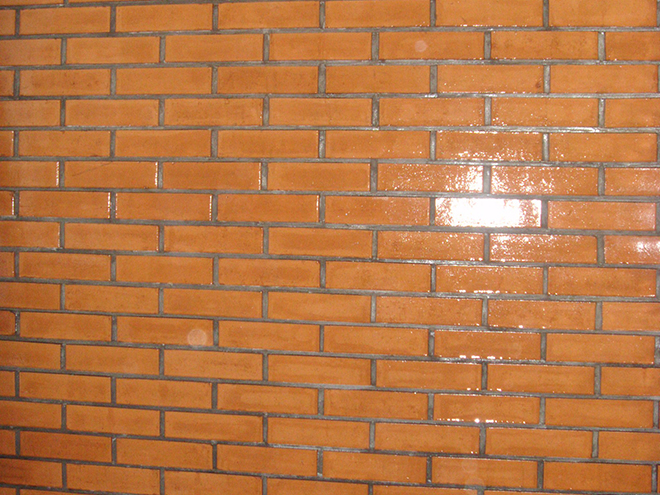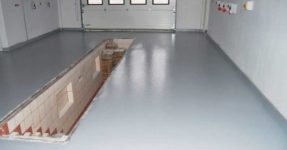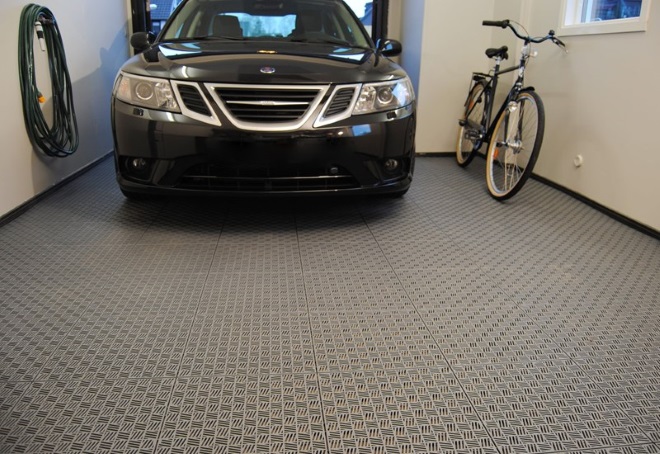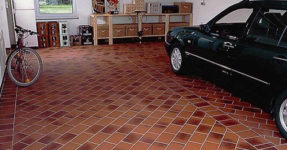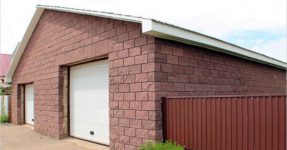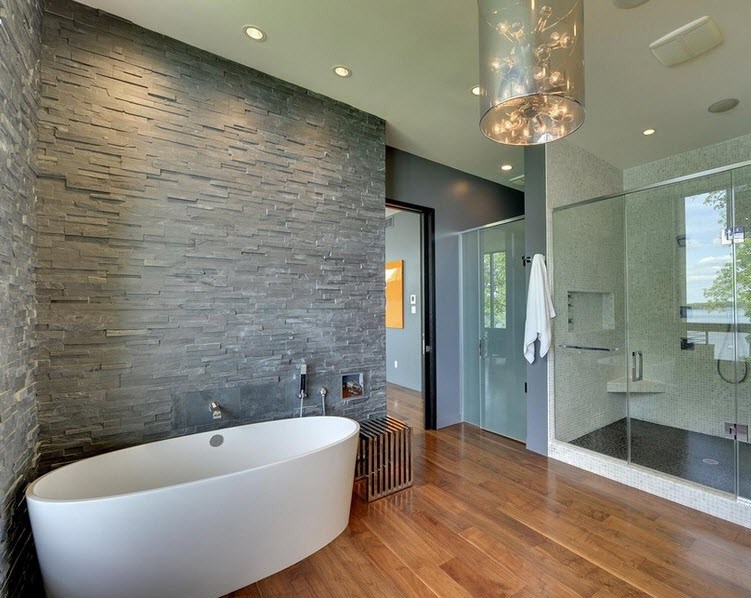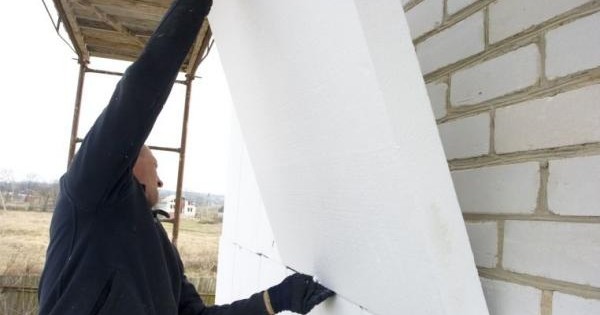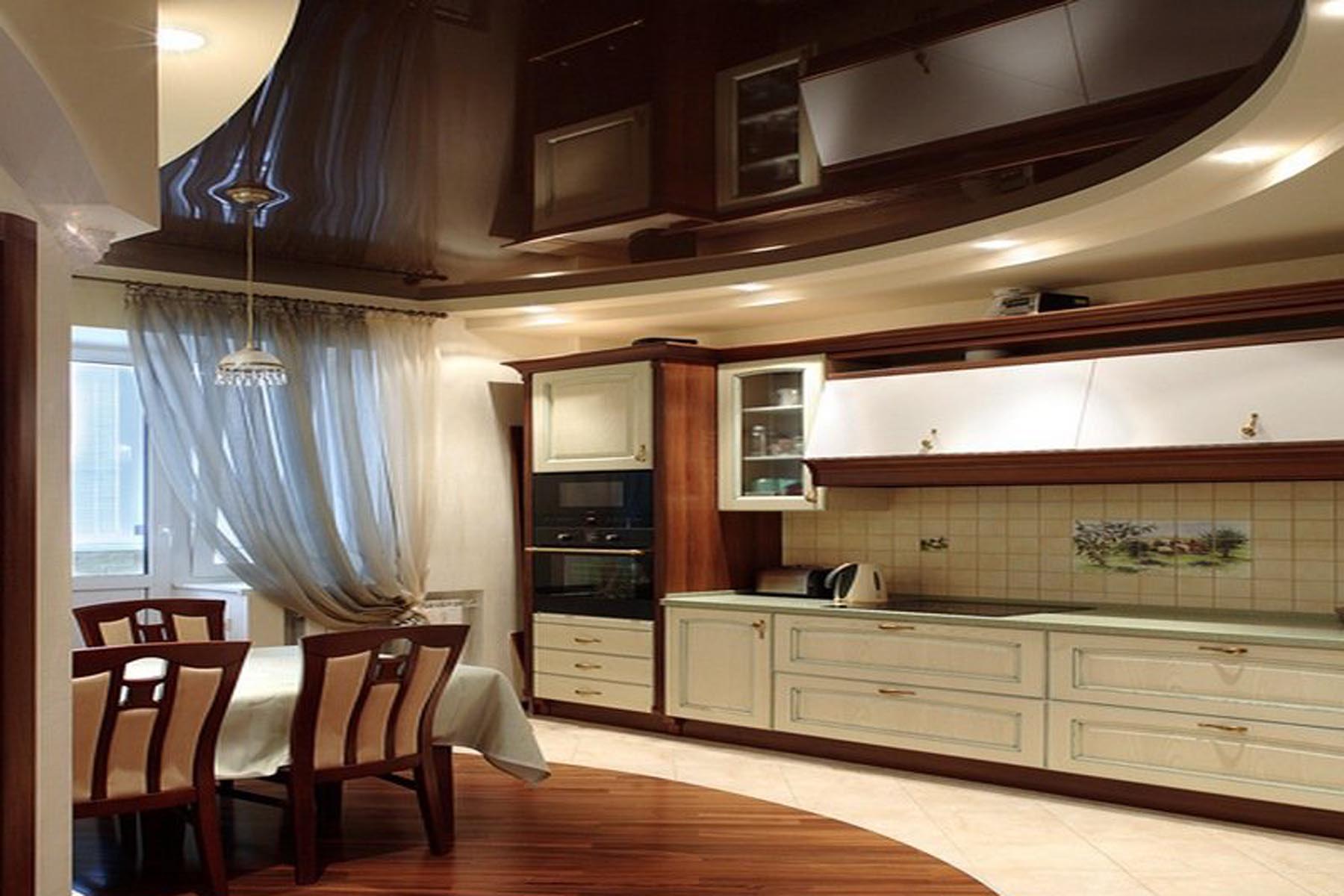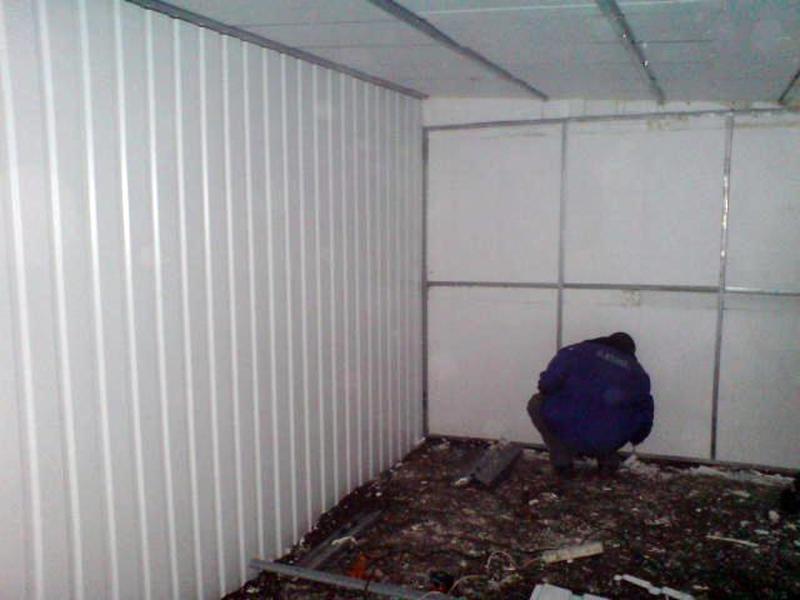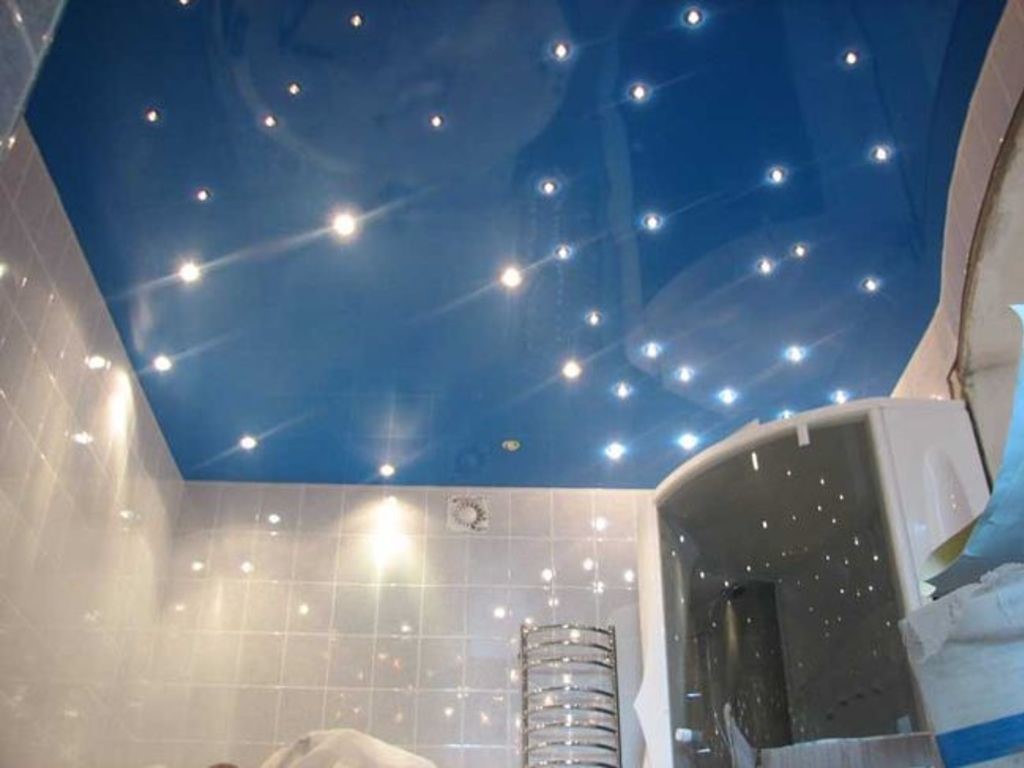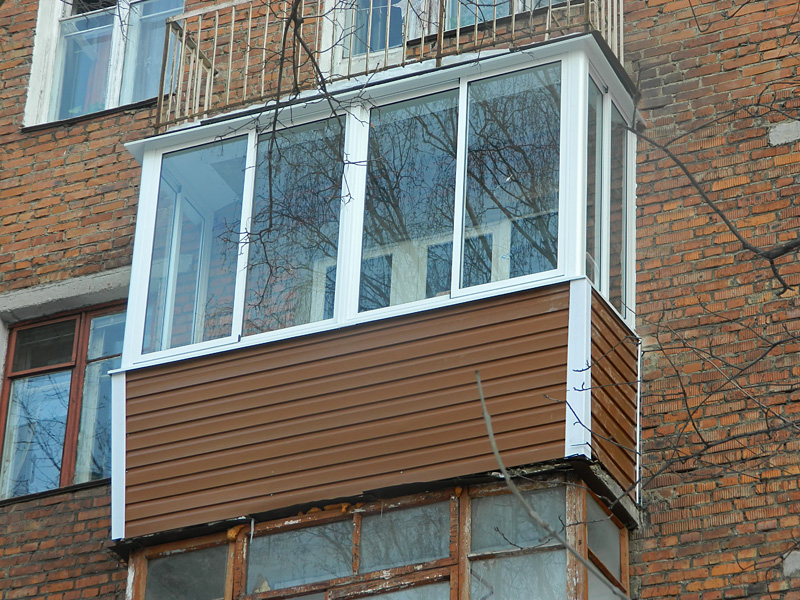How to decorate the walls in the garage: 9 best materials for interior decoration
Even at the stage of designing a garage, you should think about its interior decoration, incl. about wall cladding. It’s one thing if garage walls lined from brick - neat masonry can do without finishing at all. Another thing is if you have chosen large concrete blocks for construction, which without facing, even in a garage, will look too gloomy and unaesthetic. We figure out how to finish the walls in the garage, and what materials are best used.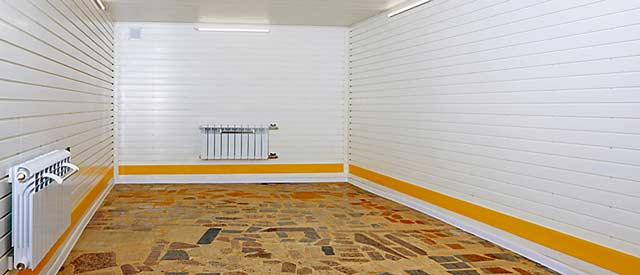
Finishing Material Requirements
Garage - a specific room. Firstly, in most cases the garage is not is heatedso that the temperature differences will be significant. Secondly, there may be increased humidity. Thirdly, in the garage they use aggressive chemicals, as well as flammable liquids. In the end, in this room there are a lot of sources of dirt. Finishing material must withstand all these factors, because the following requirements are put forward to him:
- resistance to temperature changes, frost resistance. In an unheated room in just one season, a mass of quite significant temperature jumps can be observed. Not every finishing material can cope with such an impact, while maintaining integrity and all its operational qualities;
- fire resistance. Gasoline, diesel and many other substances used for car maintenance and care are very flammable. In order for the garage to be a safe place for both the car and its owner, it is necessary to choose materials that are more resistant to fire;
- mechanical strength. Since bumps and collisions in the garage are not excluded, it is better to choose a lining that can withstand such an impact;
- resistance to aggressive chemicals. Household chemicals, falling on some materials, can destroy them. If you do not want the cladding to lose its aesthetics and important operational qualities after a few months of operation, it is better to choose a material that transfers contact with fuels and lubricants, acids, oils, greases and other substances;
- easy care. The garage is a rather dirty room, but it is necessary to maintain its cleanliness, and it will be easier to do this, having a lining that is easy and quick to wash;
- price. Each budget is different, but in each price category there are more or less suitable materials;
- aesthetics. The appearance of the garage wall decoration, of course, matters, but not the key. In aesthetic terms, the cladding is required to be neat.

Some car owners would add to this list of requirements ease of update. Even the strongest and most durable material will age sooner or later, and when this moment comes, it will be better if the cladding is as simple as possible to refresh, or simply replace some of its elements.
Fortunately, there is plenty to choose from, and below we will consider the most suitable materials for the interior decoration of the garage walls.
No. 1. Plaster
This is one of the most budgetary, and therefore the most popular ways of finishing a garage. Under the requirements described above, this cladding method fits almost perfectly. The list of benefits is significant:
- relatively low cost, and this is what you need for a garage;
- the ability to align and hide small imperfections of the foundation, because the preparatory work is greatly simplified;
- plaster does not take up useful space, in contrast to the finish, which must be mounted on a frame, for example, drywall;
- wear resistance, strength, relative resistance to mechanical damage;
- fire resistance and mold;
- resistance to temperature extremes, moisture resistance;
- durability;
- application speed;
- simple but pretty appearance.

No matter how you would like, but still you can not call the plaster an ideal coating for finishing the walls of the garage, and the following are to blame minuses:
- complexity of application and "dirty" installation process. It’s worth it yourself to finish it only if you are 110% sure of your own preparation. Otherwise, it is better to entrust the work to specialists. If mistakes are made during the installation of plaster, then cracks will appear on the surface during the first winter with temperature differences, and some areas will begin to peel off;
- the surface of the plaster quickly gets dirty, and it can be difficult to wash off the dirt. But this shortcoming can be easily eliminated. After applying a layer of plaster and drying it, the surface is treated facade paint, which provides additional resistance to moisture, dirt-repellent properties and simplifies maintenance. You can choose any color, so the issue with the aesthetic side of the cladding is also solved.
The plaster can be applied on almost any foundation, but it will be held tightly on walls of bricks, and aerated concrete and other concrete blocks. For work, it is better to take the composition on a cement-sand basis.
No. 2. Ceramic tile
Ceramic tile - Another material that almost completely meets all the requirements put forward, because this type of cladding is often found in garages. To his main benefits should include:
- resistance to moisture and frost, so that the harsh garage operating conditions do not particularly harm the coating;
- fire resistance;
- hygiene. Dirt does not stick to the surface, and in which case almost any pollution can be washed off the wall with minimal effort;
- sufficient strength;
- durability;
- wide selection and aesthetics. Ceramic tiles are produced in almost all colors, shapes and sizes, and manufacturers' collections are replenished every season, therefore, finding the right material in this variety will not be difficult. Even the simplest plain tile will look great. From an operational point of view, it is best to focus on clinker - it is stronger than ordinary tile, although it does not have such a wide variety of colors.

Without cons not done:
- the cost of the material, as well as the need to pay for it competent installation, if it is impossible to cope on their own;
- weight. Tile is a heavy material, therefore, brick walls will be the optimal basis for it;
- relatively long installation.
Since the main limiting factor from the widespread use of tiles in garages is its price, then you can go for the trick by combining materials. The lower part of the walls is the most vulnerable, because here you can use the clinker, and the rest of the run from cheaper tiles. You can make the bottom of the tile, and finish the top with plaster. In this case, we get all the benefits inherent in a tiled coating, but we can save a lot.
No. 3. Drywall
Drywall He won not only living quarters, but also technical ones. So for the decoration of the walls of the garage now often use sheets of drywall. Naturally, only those that have additional protection against moisture and fire. You can recognize this material by its gray-green color, red marking and the name of the State Committee for the Defense of Natural Resources.
Benefits:
- low cost;
- low weight of material, relatively simple and quick installation, lack of dirt, dust and debris during installation (not an example of plaster);
- careful preparation of the base is not required - all pits, cracks and other defects will disappear behind even and smooth sheets of drywall;
- when installing drywall on the frame between the base and the sheets themselves, free space is formed, which can be used to place the insulation;
- resistance to fire and moisture.

disadvantages:
- when installing sheets on a frame, the area of the room will be reduced, because if the garage is small, carefully calculate and try to evaluate how the room will change after finishing. There is also a glue mounting method, then the area of the room is not reduced, but the opportunity to carry out warming disappears;
- the need for additional cladding, since the surface of the drywall is not very attractive, given the presence of seams. In addition, the finish will improve some of the performance of the material;
- low resistance to shock, but this disadvantage can be negated by using ceramic tiles as a finish - drywall can withstand such a load;
- it is difficult to wash the surface of drywall from dirt, therefore it is better to paint with moisture-resistant washable paints - this is the simplest and most cost-effective option for wall decoration from drywall.
Gypsum plasterboard in the garage can be used not only for wall decoration, but also for the construction of partitions, as in apartments. If it is necessary to allocate, for example, an area for a storage room or a workshop, it will only be necessary to erect a frame and sheathe it with sheets.
Number 4. Pvc panels
Relatively cheap Pvc panels used to decorate both walls and ceiling in the garage. They are mounted, like drywall, on the frame, or directly on the wall. Among the main the benefits material:
- low price;
- high resistance to moisture;
- simplicity in leaving. Almost any contamination can be washed off the panel surface without much effort;
- light weight: the material will not load the walls and foundation, because the panels can be mounted in garages built from any materials;
- simple installation, and if the wireframe method is used, then it will be possible to use insulation;
- maintainability. If any part of the decoration has become unusable, then it is enough to simply replace it with a new one;
- resistance to high temperatures
- there is no need for additional decoration, since the panels themselves have a good appearance and are already well protected from moisture.

Minuses:
- the panel is easily damaged even with a slight impact. The appearance of cracks affects not only the appearance, but also the performance. However, the problem is solved by easily replacing the damaged panel;
- sensitivity to temperature extremes, therefore it is better not to save and buy panels designed for facade work. Also on sale you can find a special finish designed for cladding a garage - such panels better cope with the constant temperature difference and are designed for operation in an unheated room;
- at first after installation, an unpleasant odor may appear, but it quickly disappears.
No. 5. Wooden lining
If the garage serves not only as a place for car parking and its repair, but also as a place for privacy and meeting with friends, you can choose an aesthetic finish from wooden lining.
Benefits:
- excellent appearance, environmental friendliness;
- high heat and sound insulation qualities;
- relatively low cost, especially when it comes to softwood lining, namely this one is used in garages;
- high strength, resistance to mechanical damage;
- simple installation on a wooden crate. The panels themselves are tightly connected thanks to the tongue-and-groove system;
- the lining has a small coefficient of thermal expansion, therefore, when the temperature drops, the coating does not deform.

Minuses Expected for wood cover:
- fear of high humidity;
- fear of fire;
- high possibility of damage by pests and mold;
- difficulty in care, as stains from household cleaning products are difficult to clean.
If you use a row protective equipment, then some qualities of the tree can be greatly improved. Fire retardants will increase resistance to fire, antiseptics will protect against mold, and varnish coating will simplify the routine cleaning procedure, as oil and other liquids will not be absorbed into the porous hygroscopic surface of the tree.
No. 6. Decking
If in the garage there will be a workshop or even a miniature service station, then the best option to wall the walls is to use corrugated board. It is inexpensive and very practical. The steel sheet is protected with a polymer or paint coating, because the material well tolerates all sorts of effects. The relief attached to the steel sheet gives it extra strength.
pros:
- strength, the material withstands mechanical damage;
- resistance to high humidity and temperature fluctuations;
- resistance to aggressive chemicals;
- quick and easy installation;
- durability;
- wide selection of colors.

Decking can be used as a material for cladding already built walls of a garage, but more often it performs two functions at once: material for building walls of a garage and decoration, i.e. the walls are erected from a profiled sheet and do not pass additional cladding.
A low corrosion resistance is often called a minus, but if the profiled sheet is covered polymer coating, which was not damaged during installation, the corrosion of the material is not terrible. It is more difficult to deform a steel sheet than a plastic lining, but replacing the damaged area will be more troublesome.
Number 7. Plywood and OSB
Plywood and oriented particle boards are not used very often for finishing a garage, but still this option does exist. The plywood will have to be additionally coated with a means to increase moisture resistance, but OSBs are already protected against moisture (OSP-4).
pros:
- relatively low price;
- resistance to moisture if a material of the appropriate class is selected;
- high level of strength;
- resistance to temperature extremes;
- durability;
- resistance to mold, if antiseptic treatment has been carried out.

Minuses:
- flammability. Despite attempts by manufacturers to somehow solve this problem, sheets of plywood and OSB literally flare up when exposed to fire;
- OSB sheets include formaldehyde resins, so when buying, pay attention to the level of their emissions, and also provide good ventilation in the garage.
Number 8. Concrete
The most affordable option for wall decoration in the garage is to use concrete. True, provided that for flooring concrete was also chosen, you will not get a very attractive gray box, but the arrangement will not fly into a pretty penny, everything will be reliable and durable.
Benefits:
- high strength;
- resistance to fire;
- high level of maintainability, so the occurrence of cracks and other defects should not upset you;
- low cost;
- acceptable frost resistance;
- normal moisture resistance, which can be increased by covering the walls with varnish or paint;
- resistance to oil, fuel and other liquids;
- high adhesion to bricks and concrete blocks.

Minuses:
- the complexity of the work, the complexity. In addition, the lack of necessary skills in finishing work can result in the appearance of cracks in concrete;
- installation of concrete pavement is a “dirty” process;
- dubious aesthetics, but in the garage you can put up with this drawback.
No. 9. Lacquer
If the garage was built of brick, then you can not invent with decoration, but simply varnish the walls. This will give additional protection to the masonry.Among the benefits of this option:
- low cost;
- ease of application;
- varnish will additionally protect the brick from moisture and aggressive substances;
- additional reinforcement, the walls will be very strong;
- protection against fungus and mold due to the antiseptics included in the composition;
- dust and dirt almost do not “stick” to the varnish coating, and it will be easy to keep the walls clean;
- the brick is not afraid of fire and temperature extremes;
- lacquer makes the masonry more attractive.

Minuses:
- a brick wall should be more or less attractive, otherwise the result will not be very aesthetic;
- internal insulation is excluded.
Varnish can also be used for additional protection of concrete, plaster, plywood.
The choice of material and the method of its installation depends on many factors. This is the budget, and the availability of the material itself, and the opportunity to do it yourself, and personal preferences, and the need to carry out internal wall insulation. Therefore, think three times, consider all factors, and only then make a choice.

